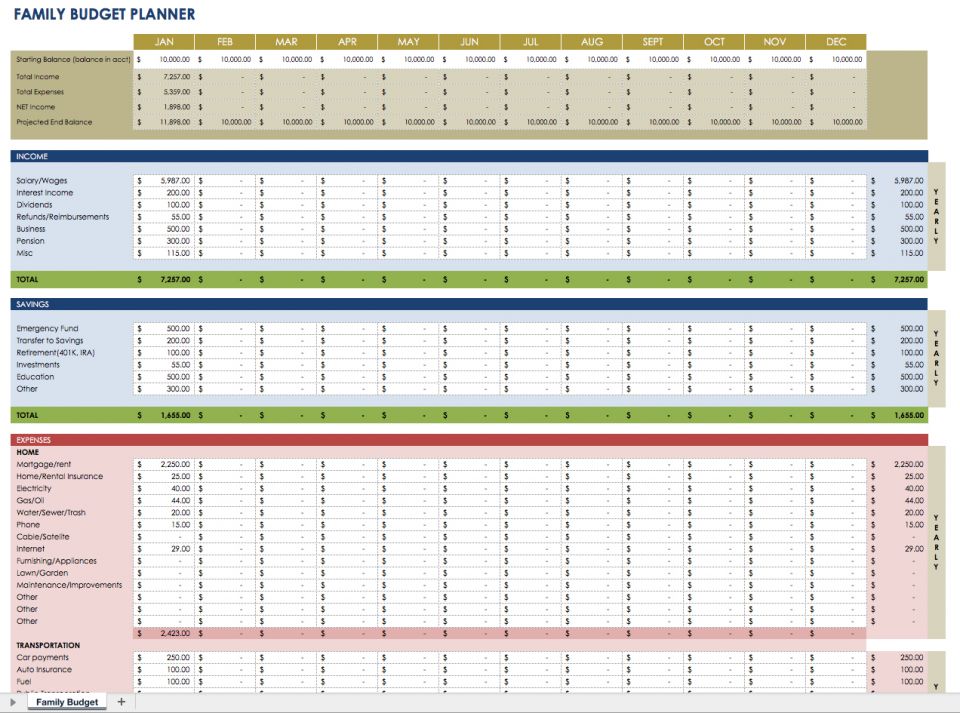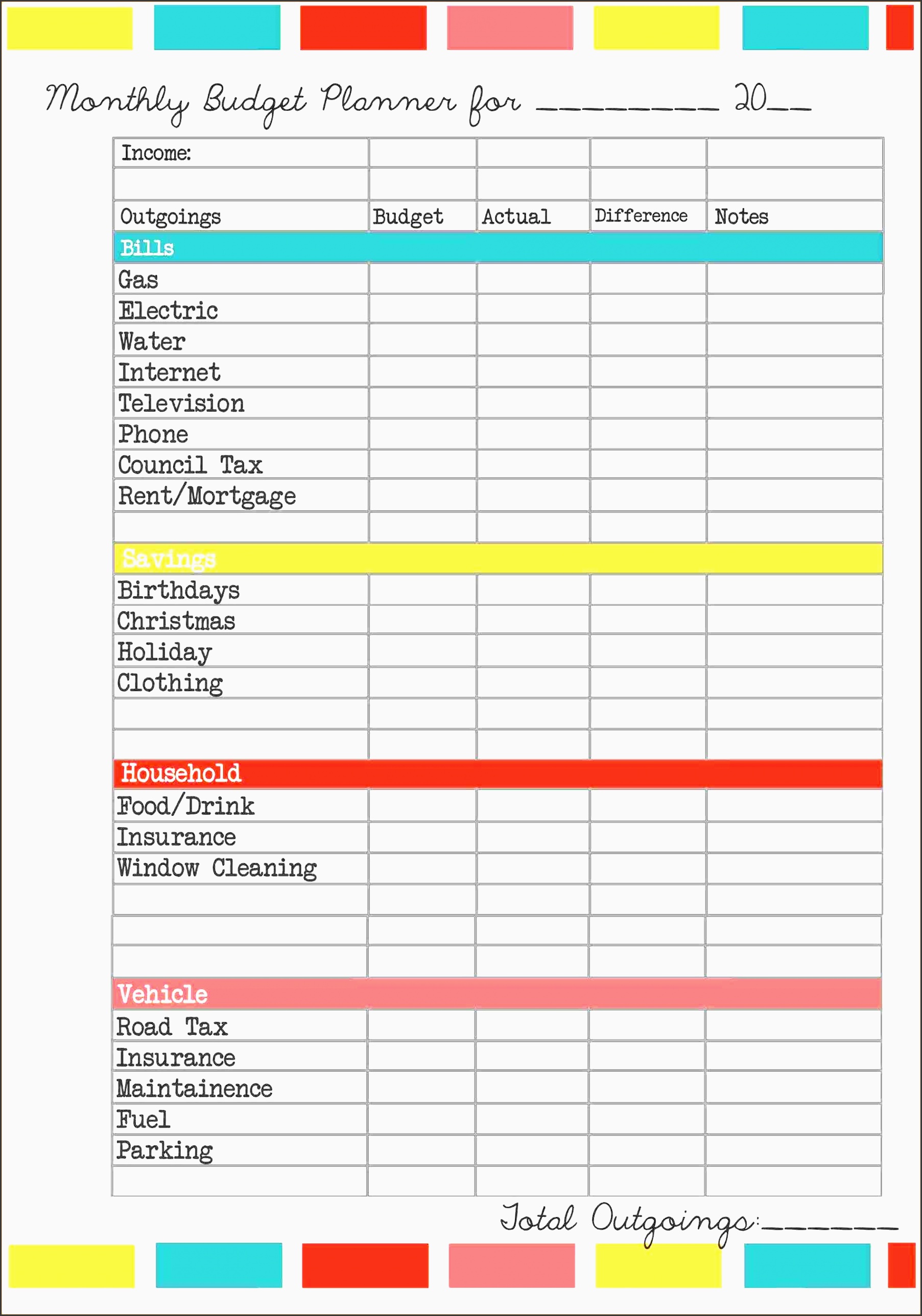
To learn more about relationship-based ads, online behavioral advertising and our privacy practices, please review the Bank of America Online Privacy Notice and our Online Privacy FAQs. These ads are based on your specific account relationships with us. In addition, financial advisors/Client Managers may continue to use information collected online to provide product and service information in accordance with account agreements.Īlso, if you opt out of online behavioral advertising, you may still see ads when you sign in to your account, for example through Online Banking or MyMerrill. If you opt out, though, you may still receive generic advertising. If you prefer that we do not use this information, you may opt out of online behavioral advertising.
#Monthly budget planning Offline#
This information may be used to deliver advertising on our Sites and offline (for example, by phone, email and direct mail) that's customized to meet specific interests you may have.

Here's how it works: We gather information about your online activities, such as the searches you conduct on our Sites and the pages you visit. Relationship-based ads and online behavioral advertising help us do that. For an easy-to-use template that also works as a budget calculator, check out this Interactive Budgeting Spreadsheet.We strive to provide you with information about products and services you might find interesting and useful. Like our hypothetical Rob, review your own budget to see if your spending makes sense for your goals, and adjust accordingly. Therefore, he adjusts his budget so that he’s spending less on vacations and saving more for his down payment.

#Monthly budget planning pdf#
Download the printable file in PDF format, print it out with any printer and start using today. If your income varies from month to month, use an average based on the last year or start with your low-earning month of that year as a baseline.

However, Rob’s goal is actually to save for a down payment. Personal budget planning made simple with this professionally-designed budget planner template. Calculate Your Monthly Income: Start with your monthly after-tax income or take-home pay as your spending limit for each month. If his main goal was to have vacations, then this would align with that priority. Through our Budget Forms below, budgeting will be as easy and efficient as you want it to be. You may decide to start by budgeting your daily expenditures, and then move on to weekly planning, until you are able to forecast your budget for a month or even a year. After reviewing his expenses, he realizes that his money is going more towards spending on vacations than it is saving on a down payment. Budgeting your money can start through baby steps. Once your expenses don’t exceed your income, ask yourself this second question: Do your expenses align with your budget goals? For example, let’s say Rob’s practical budget goal is to save for a down payment on a house. This will help you avoid using credit to make ends meet, which often leads to expensive debt problems. So here’s the first budget maker question: Are you spending more than you earn? If you are, then review that master list of expenses and cut it down until your total expenses match your total income. You already know what your expenses are because you’ve been tracking them. It must prevent your expenses from exceeding your income, and it must align with your practical budget goals. With practical goals to work towards and knowing your expenses, you’re ready to prepare your budget. Overspending is a key reason why budgets fail, so all of these steps help you avoid spending more than you make. To make the process even easier, use this simple money worksheet: our Monthly Expense Tracker. Doing this will give you a good idea of your overall spending habits, and you might be surprised by what you find out.

Whether you’re paying your bills, shopping online, or buying snacks at a convenience store, jot down every cent you spend into a single document. But do you know where it all goes? The best way to figure this out is simply to track your spending for a month. child tax credits, alimony or child support, investment income). You probably already know how much you earn each month and how much you might get from other sources (e.g. Once you have some practical goals in mind, it’s time to figure out how money is flowing in and out of your household. Track the Money Coming Into Your Household and Your Spending Track the Money Coming Into Your Household and Your Spending 3.


 0 kommentar(er)
0 kommentar(er)
